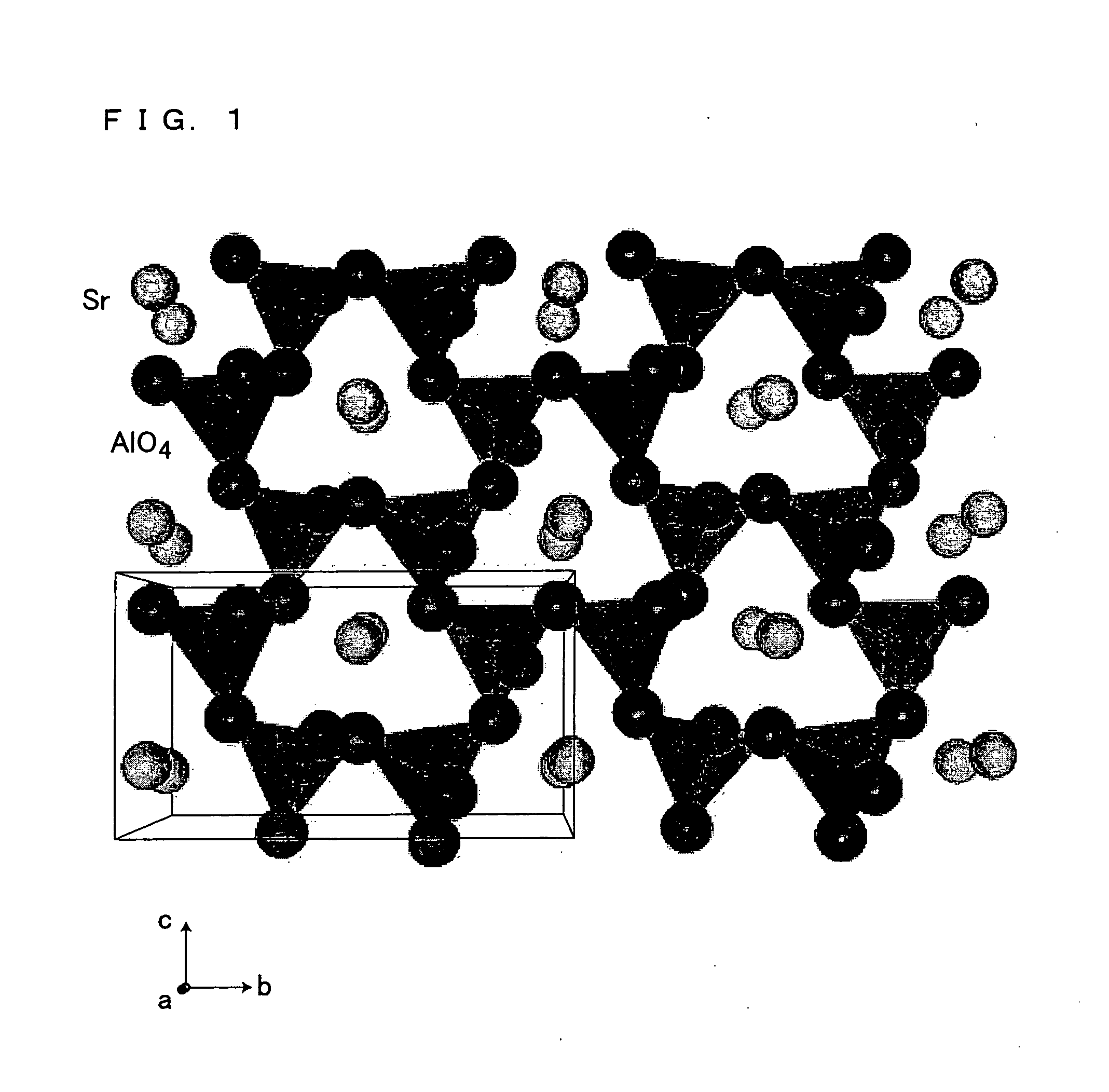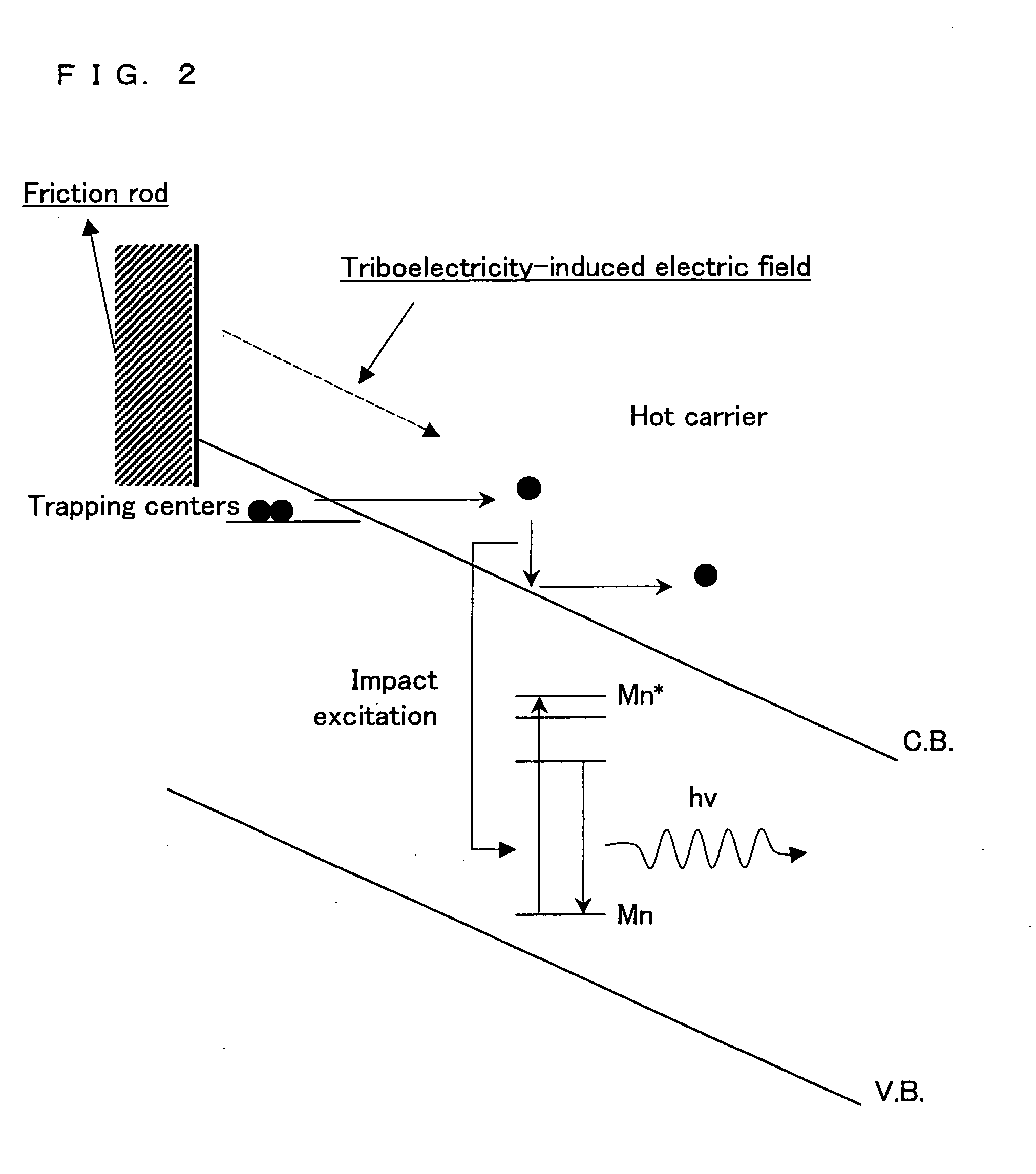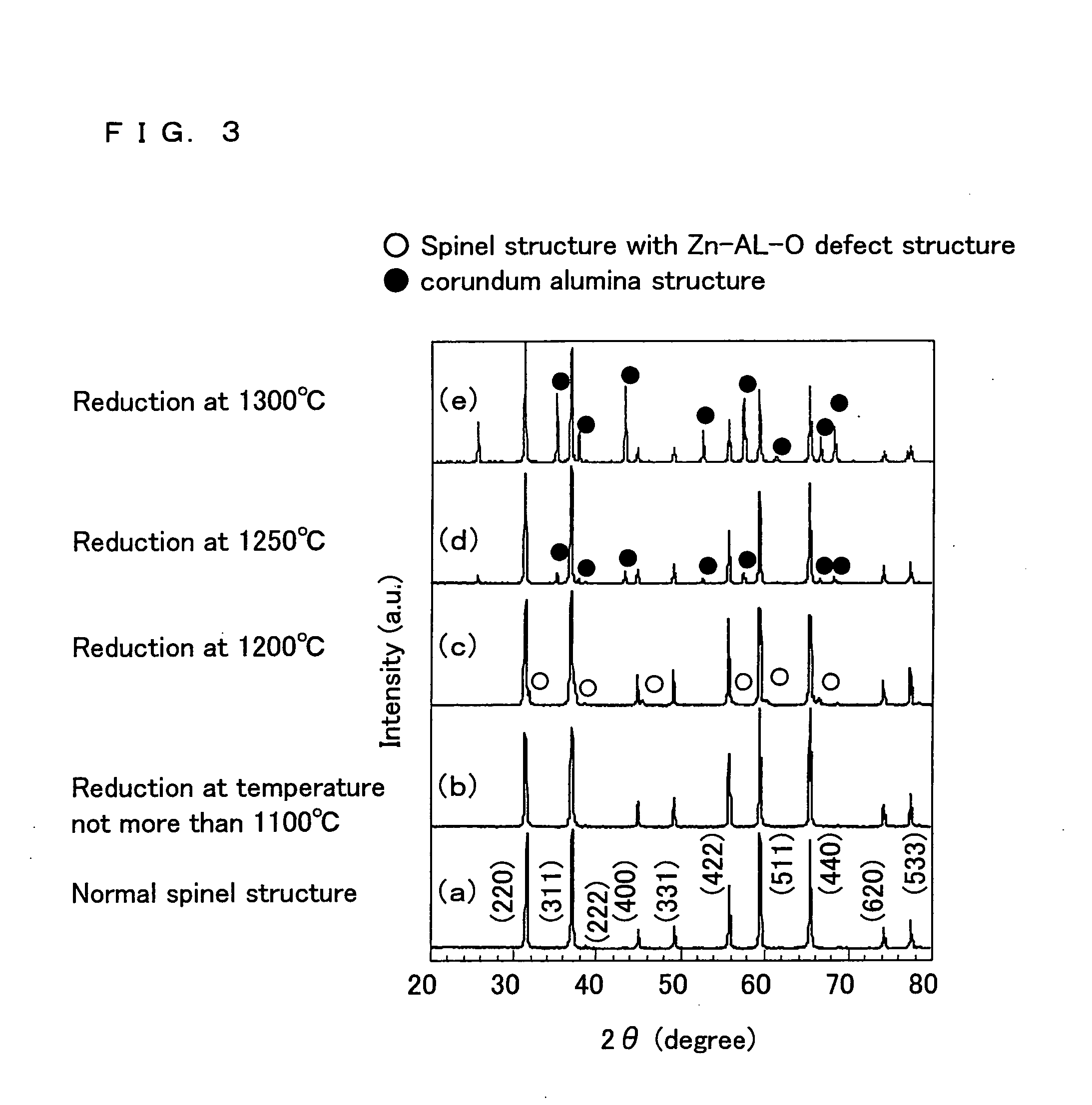High-Luminosity Stress-Stimulated Luminescent Material, Manufacturing Method Thereof, and Use Thereof
a luminescent material and high-luminosity technology, applied in the field can solve the problems of insufficient light emission luminescence, limited application and use and low light emission luminescence of stress-stimulated luminescent materials
- Summary
- Abstract
- Description
- Claims
- Application Information
AI Technical Summary
Benefits of technology
Problems solved by technology
Method used
Image
Examples
example 1
[0134]Among the stress-stimulated luminescent materials of the present invention, a material adopting the luminescence mechanism using friction will be specifically described in reference to FIGS. 3-12.
[0135]ZnO, Al2O3, and MnCO3 were weighed so as to satisfy Zn0.95Mn0.05Al2O4, and sufficiently mixed in ethanol. Then the mixed substances were dried and crushed. Subsequently, the substances were burned in the air at 1250° C. and for 8 hours, and a sample was obtained as a result. Analyzing the crystal structure of the sample using an X-ray diffractometer, it was found that a material with a pure spinel structure was obtained as shown in FIG. 3(a).
[0136]Thereafter, the obtained material (ZnAl2O4:Mn) with the spinel structure was reduced in 5% H2—Ar, at temperatures of 300-1300° C. FIG. 4 shows the weight loss curve during the reduction. The weight loss at temperatures not higher than 600° C. was caused by the desorption of adsorbed water and oxygen. The weight rapidly decreased at 120...
example 2
[0144]High purity reagents SrCO3, Al2O3, and Eu2O3 were weighed so as to satisfy Sr0.99Eu0.01Al12O19, Sr0.99Eu0.01Al4O7, Sr3.99Eu0.01Al14O25, Sr0.99Eu0.01Al2O4, and Eu0.01Sr2.99Al2O6, and were sufficiently mixed with one another. Thereafter, the mixed reagents were tentatively burned at 800° C. in the air, and then the burning was carried out at a temperature range of 1000-1700° C. and in the atmosphere of Ar+5% H2. As a result, stress-stimulated luminescent bodies with the aforesaid compositions were obtained. As a result of examining the crystal structure of each of the obtained stress-stimulated luminescent bodies by X-ray diffraction, it was found that the crystal structure was pure.
[0145]The obtained particulate (powder) stress-stimulated luminescence material was mixed with epoxy resin at a weight ratio of 1:1, and a rectangular-parallelepiped sample (i.e. a stress-stimulated luminescent body) of 54 mm, 19 mm, and 5 mm in length, width and height was formed.
[0146]Subsequently,...
example 3
[0150]In the same manner as Example 2, SrCO3, Eu2O3, and Al2O3 were mixed so as to have various compositions. As a result, a crystal phase coexisting with the α-SrAl2O4 phase was synthesized. FIGS. 14(a) and 14(b) shows the variations of stress-stimulated luminous intensities in case where the α-SrAl2O4 phase coexisted with a non-luminous crystal phase. The result proved that, even if stress-stimulated luminescence was achieved because of the coexistence of the α-SrAl2O4 phase, the luminous intensity was low. On the other hand, the highest luminous intensity was achieved when only the α-SrAl2O4 phase was provided. As shown in FIGS. 15 and 16, the luminous intensity in the case of the coexistence changed in accordance with the variation of the stress, and the luminescent spectrum was peaked at 520 nm, as in the case where only the α-SrAl2O4 phase was provided.
PUM
 Login to View More
Login to View More Abstract
Description
Claims
Application Information
 Login to View More
Login to View More - R&D
- Intellectual Property
- Life Sciences
- Materials
- Tech Scout
- Unparalleled Data Quality
- Higher Quality Content
- 60% Fewer Hallucinations
Browse by: Latest US Patents, China's latest patents, Technical Efficacy Thesaurus, Application Domain, Technology Topic, Popular Technical Reports.
© 2025 PatSnap. All rights reserved.Legal|Privacy policy|Modern Slavery Act Transparency Statement|Sitemap|About US| Contact US: help@patsnap.com



